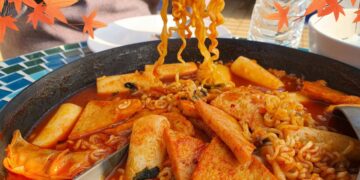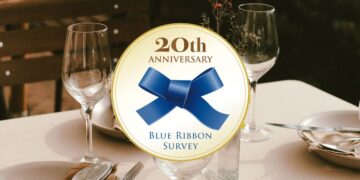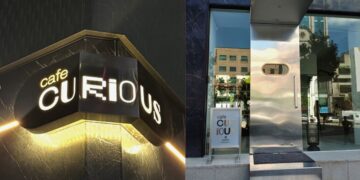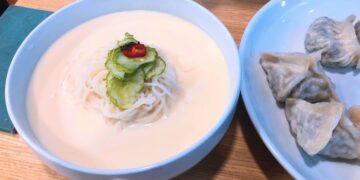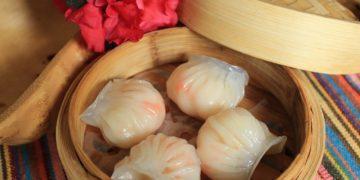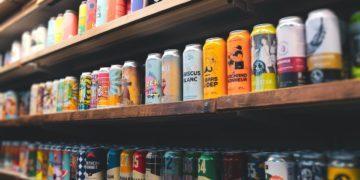What it’s like when summer comes in South Korea? It’s hot, humid, exciting, beautiful, and super refreshing, especially with bingsu! This iconic Korean shaved ice dessert has long been the country’s sweet escape from the heat, served in oversized bowls and covered in toppings that feel almost too pretty to eat. But summer 2025 has brought even more exciting trends as Korean bingsu now comes with even more appealing favors—in a cup!
That’s right! No more getting confused about which flavors to choose because now you can choose everything! So join us as we explore what is this Korean cup bingsu trends, how the locals are torn between love and controversies, and how not to miss out on this cup bingsu while you’re in South Korea!
Korean Cup Bingsu Trends: What Is It and Why Is It Everywhere?
Let’s start with the basics. Cup bingsu, as the name suggests, is a single-serving version of Korean shaved ice dessert, bingsu.
Traditionally, bingsu was a group affair: large bowls made to share, featuring finely shaved milk ice, fruit, condensed milk, red bean, or even entire slices of cheesecake. These versions still exist—mostly in dessert cafés and hotel lounges—but they’ve been upstaged lately by this new, humble contender Korean trends: bingsu in a plastic to-go cup.
Brands like Mega Coffee, Ediya, Compose Coffee, and Gongcha now offer cup bingsu in different flavors, all priced affordably (usually around 4,000–6,000 KRW, or approximately 3 to 5 USD). Some feature classic patbingsu toppings like sweet red bean and injeolmi (roasted soybean flour rice cake). Others go bolder with mango chunks, matcha, or even injeolmi milkshakes.

Why the cup bingsu trends get so appealing to Korean locals? Well, easy! It’s cheap, cold, and completely portable. You can eat it in the office after lunch, grab it while walking, or save the rest for later in the freezer. No spoons to return, no tables to clean.
And yet, that’s not the full story.
Korean Cup Bingsu Trends: How a Dessert Went Viral (And Stirred a Storm Online)
Unlike those other viral desserts in South Korea, the tipping point of Korean cup bingsu trends wasn’t just flavor—it was the internet.
In May 2025, a post went viral on X (formerly Twitter), showing rows of Mega Coffee’s Red Bean Cup Bingsu with a sarcastic caption from someone claiming to be a barista: “Please, don’t buy cup bingsu.”
It was meant as a joke. But it did the opposite, instead.
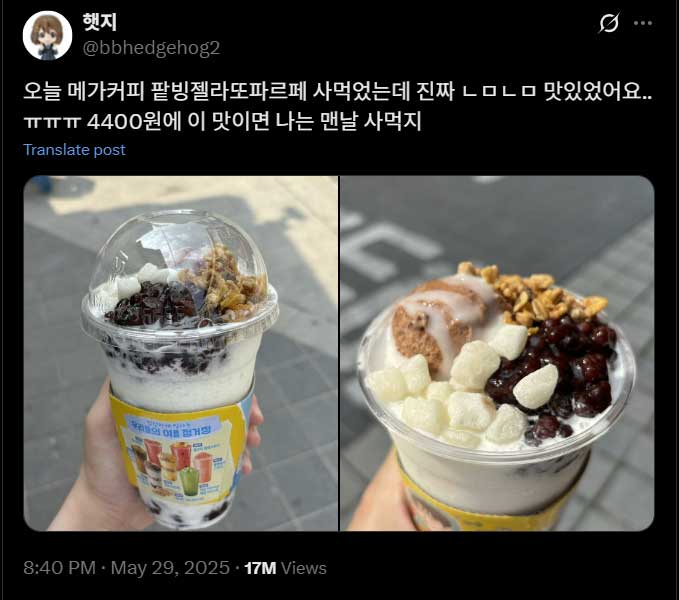
Thousands of reposts later, the hashtag #CupBingsu started trending, followed by K-pop fans sharing photos of idols like Sungchan from Riize saying they’d tried it.
Then, it only made the queues longer.
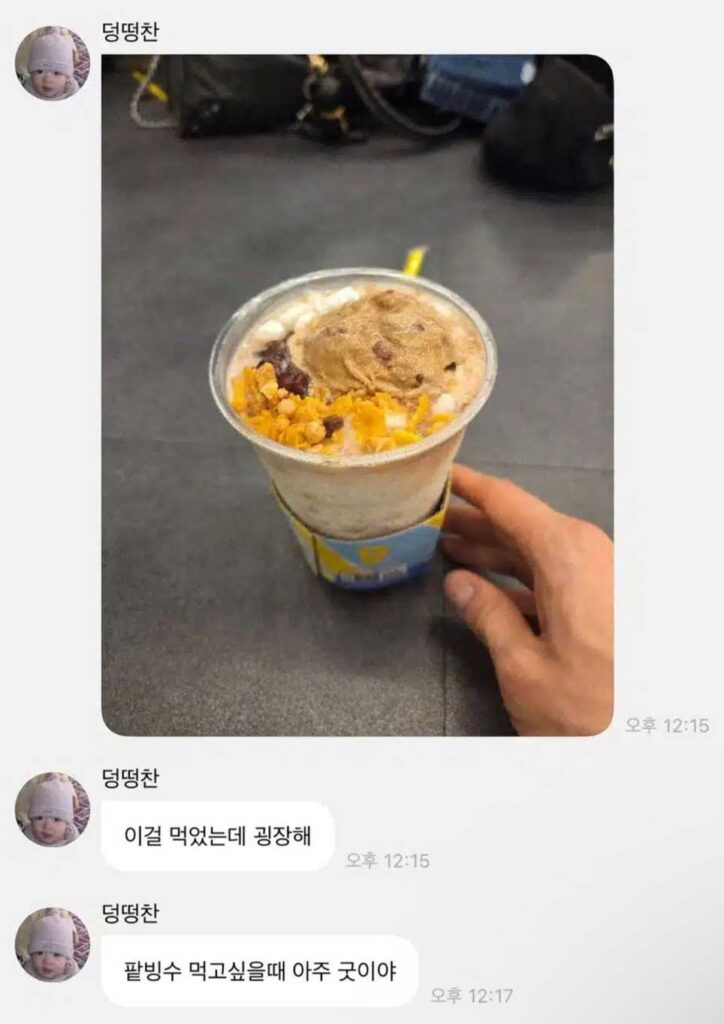
By June, some stores couldn’t keep up. Staff complained on forums, memes spread of “red bean bingsu filled with tears,” and some branches quietly removed cup bingsu from delivery apps just to survive the midday rush.
What made this relatable wasn’t just the taste. It was the collision of work culture, social media, and food craving—a dynamic anyone living in a fast-paced city could relate to. It’s easy to love cup bingsu when you’re the one ordering it. But making hundreds a day? That’s another story.
What Tourists Often Get Wrong
As a traveler, you might think: “Oh, I’ve had Korean bingsu before.” But don’t get it wrong. Because cup bingsu isn’t just a smaller portion—it’s an entirely different experience, both culturally and socially.
Here’s what most tourists don’t realize:
1. It’s Not About Luxury—It’s About Everyday Joy
Cup bingsu sits at the opposite end of Korea’s bingsu spectrum. While hotels still serve ₩100,000 bingsu topped with champagne granita and avocado slices (yes, that exists), cup bingsu is about accessibility and comfort. Locals aren’t choosing this dessert for elegance—they’re choosing it for the same reason you might pick an iced coffee over craft espresso. It fits into their life.
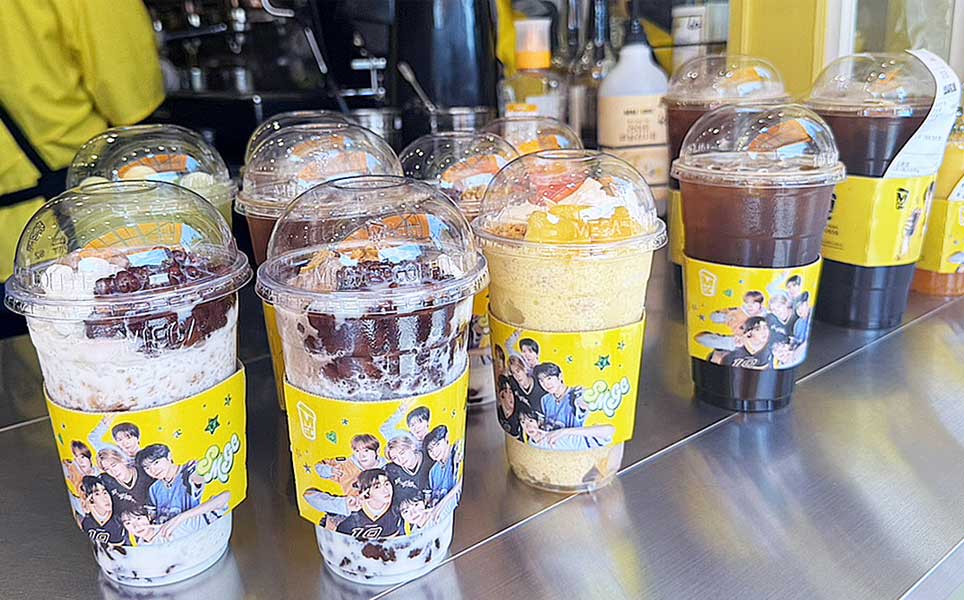
2. Each Chain Has Its Signature—and the Flavor Profiles Are Something Else Entirely!
Now, you may also think since cup bingsu is just another part of Korean viral trends, you can just drop by somewhere and get something random just to make sure you don’t miss out.
But no. That’s not how it works.
Mega Coffee’s Red Bean Parfait is sweet and traditional, while Compose Coffee has a Patjeolmi Shake, blended into a milkshake format. At the same time, Ediya’s cup bingsu leans heavily on injeolmi and Gongcha’s take is closer to a bingsu smoothie with flavors like Matcha Red Bean and Milk Tea Red Bean Shake.
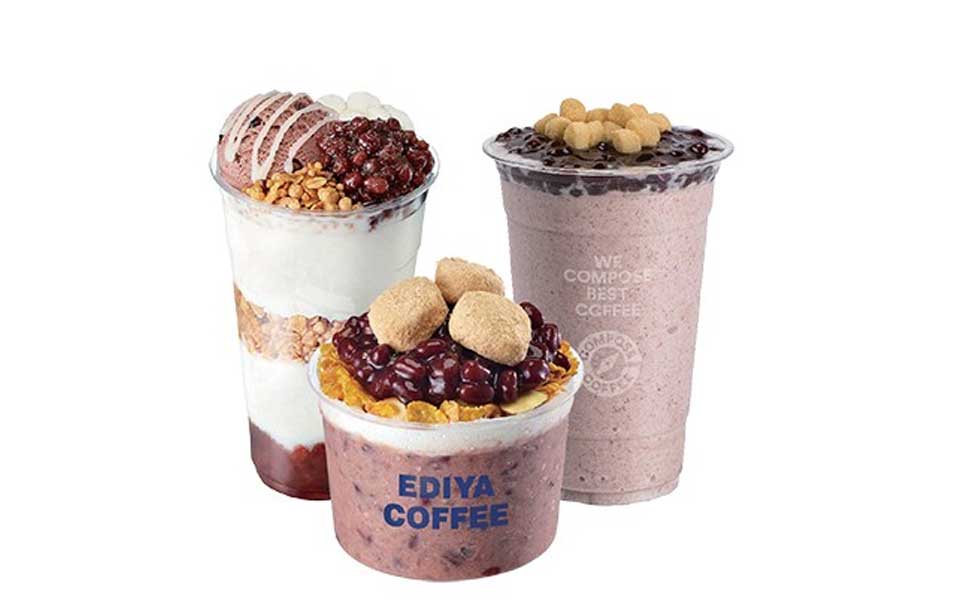
Every brand treats this Korean cup bingsu trends differently with their own iconic touch. That is why you can’t just expect the same taste everywhere.
→ Pro tip: If you’re not big on sugar, start with HALF the toppings or ask for extra ice. Some versions contain up to 86g of sugar per serving, far beyond the daily limit recommended by the WHO.
3. It Might Be Sold Out (Or Not Even Available)
Some branches of Mega Coffee don’t carry it, while others limit sales to in-person orders only. Delivery apps often charge more—sometimes up to ₩8,100 for a cup that should cost ₩4,400. It’s not a scam; it’s just demand, labor, and app fees rolled into one.
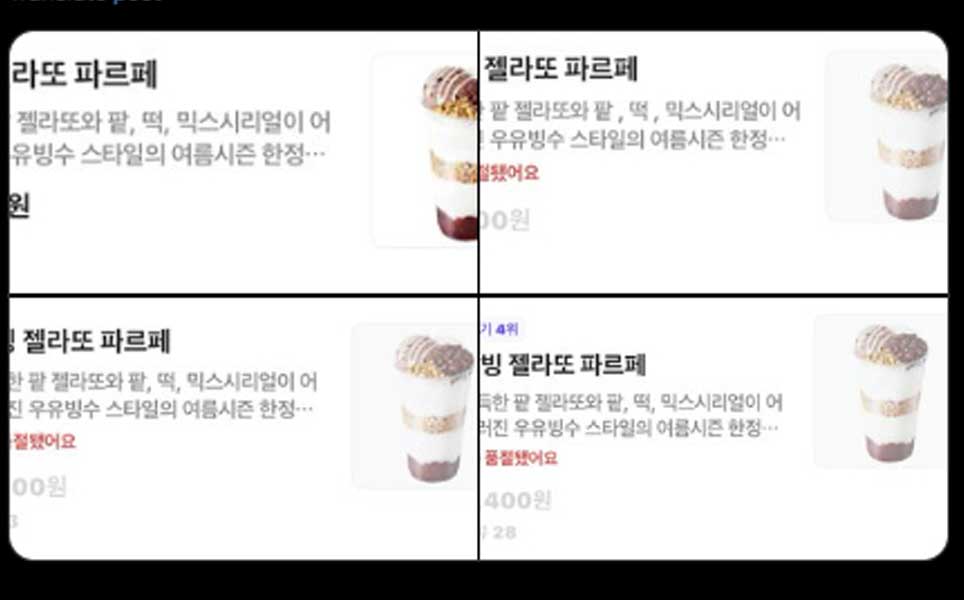
→ Before heading to a shop, check the café’s Instagram or Naver Map reviews for real-time availability.
How to Try Cup Bingsu Like a Local: A Down-to-Earth Traveler’s Guide
You don’t need to chase viral fame to enjoy this trend. Here’s how to taste cup bingsu in a way that’s low-stress, high-reward:
- Go off-peak (before 12 PM or after 3 PM). That’s when prep stations aren’t overwhelmed, and your order gets the attention it deserves.
- Eat it slow—then freeze the rest. Most cup bingsu comes with a lid. Locals often freeze half and eat it like a mini bingsu bar at night.
- Try more than one. Because they’re cheap, it’s easy to taste-test a few brands. Compare textures, toppings, and ice quality.
- Talk to the baristas. If they’re not slammed, they’ll often tell you which one is freshest or give you subtle recommendations.
- Support smaller cafés. Some local shops have their own take on cup bingsu, using house-made red bean paste or seasonal fruits. You might find something unforgettable—and off the radar.
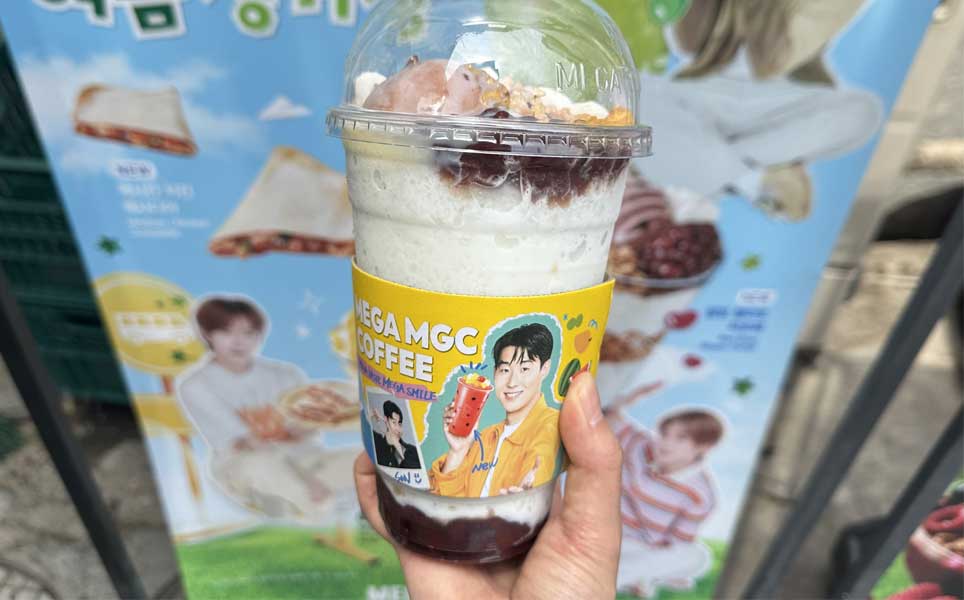
Final Scoop: Cup Bingsu Is More Than Just a Trend. It’s Window into Modern Korea.
Behind that innocent plastic cup is a lot more than crushed ice. It’s a story of Korea’s shifting lifestyle: faster, more affordable, digitally driven, and deeply influenced by youth culture. But it’s also a story about how everyday Koreans find refreshment—not just from the heat, but from the pressures of a city that never slows down.
So when you’re walking through Seoul this summer, don’t just snap a photo and move on. Grab a cup, take a breath, and taste the rhythm of Korea—one spoonful at a time.
Because sometimes, the most meaningful discoveries don’t come from a Michelin guide or a luxury lounge. Sometimes, they come cold, sweet, and packed in plastic—with red bean and a side of real life.
Related Posts
3,011 total views, 4 views today


